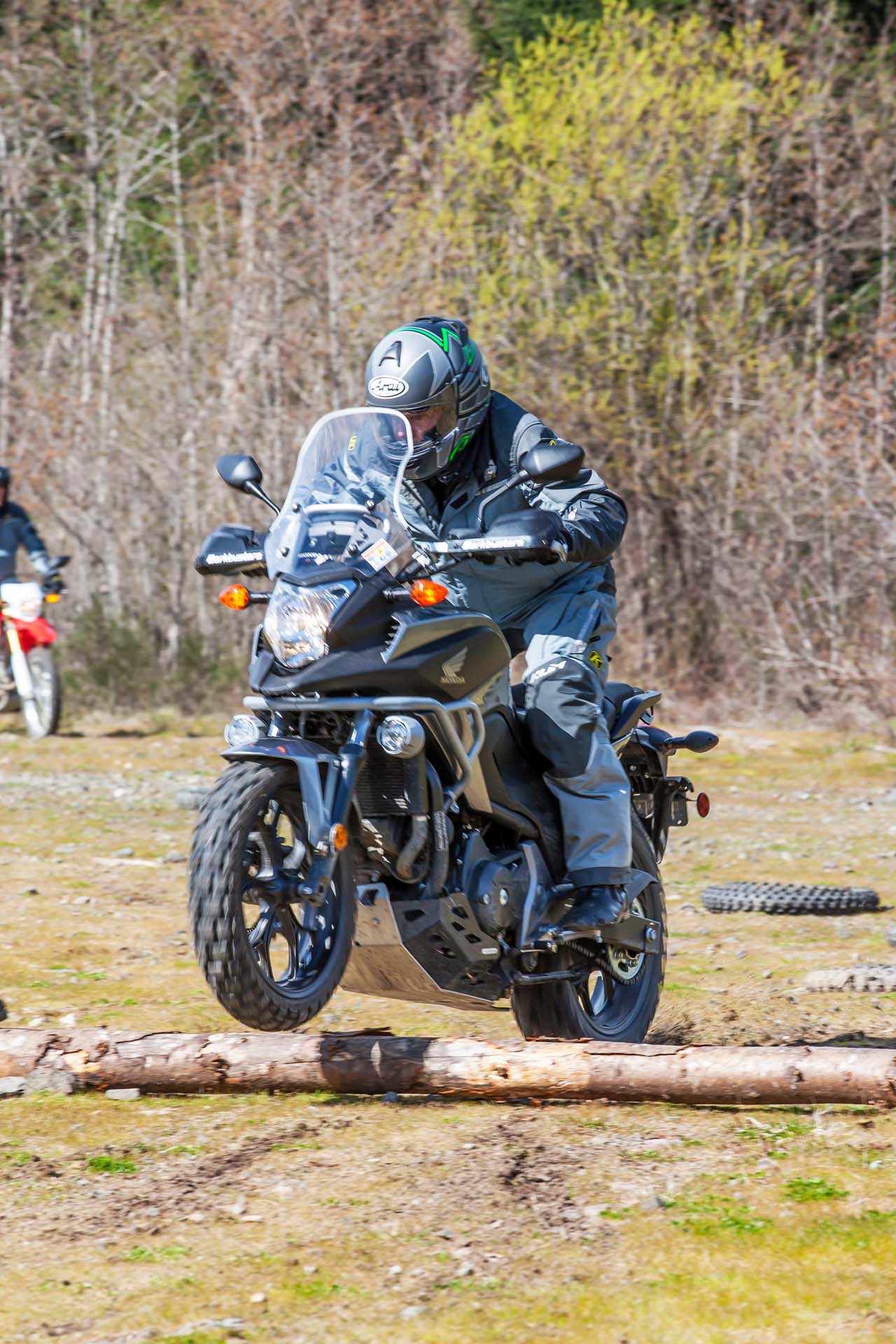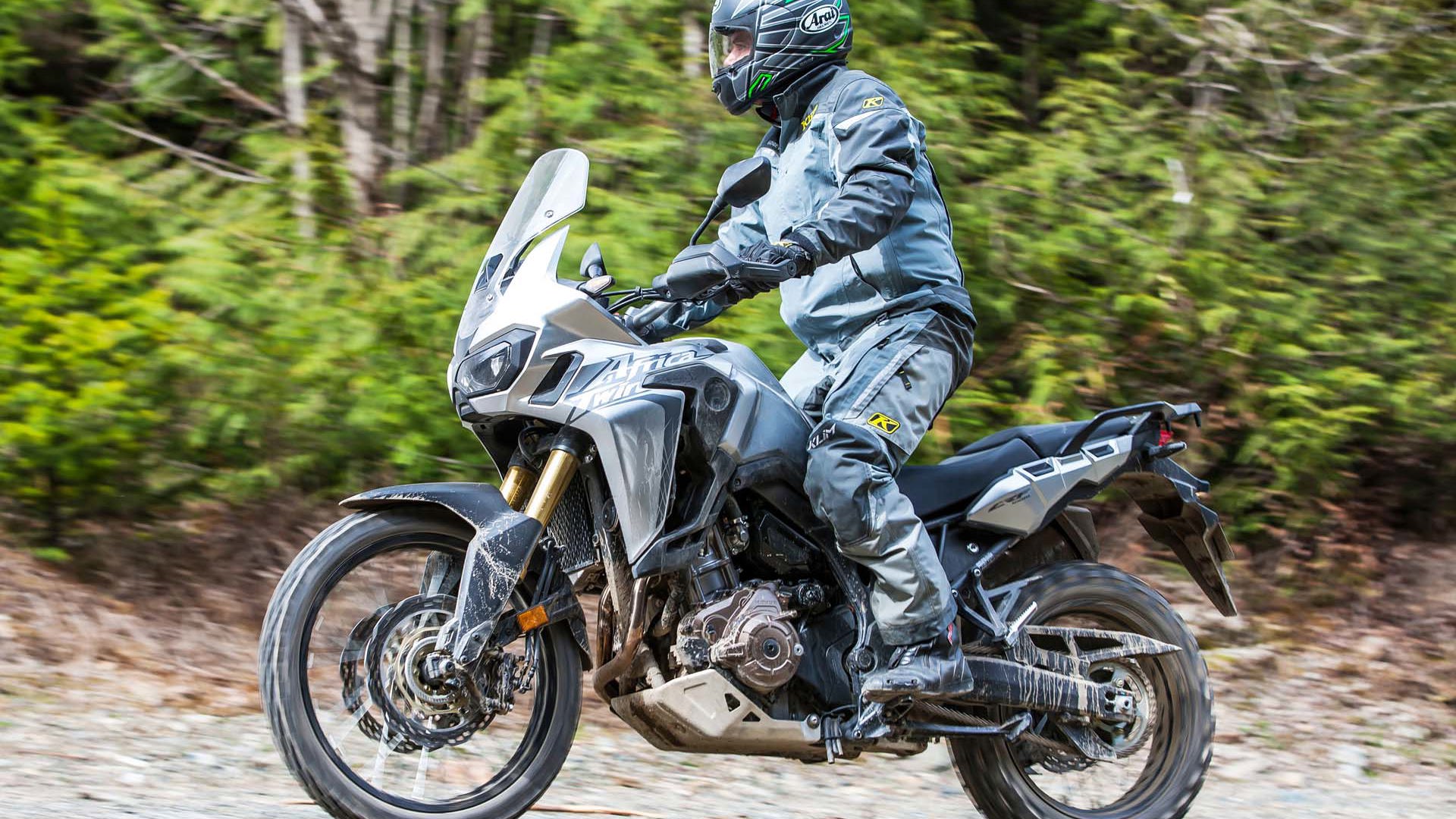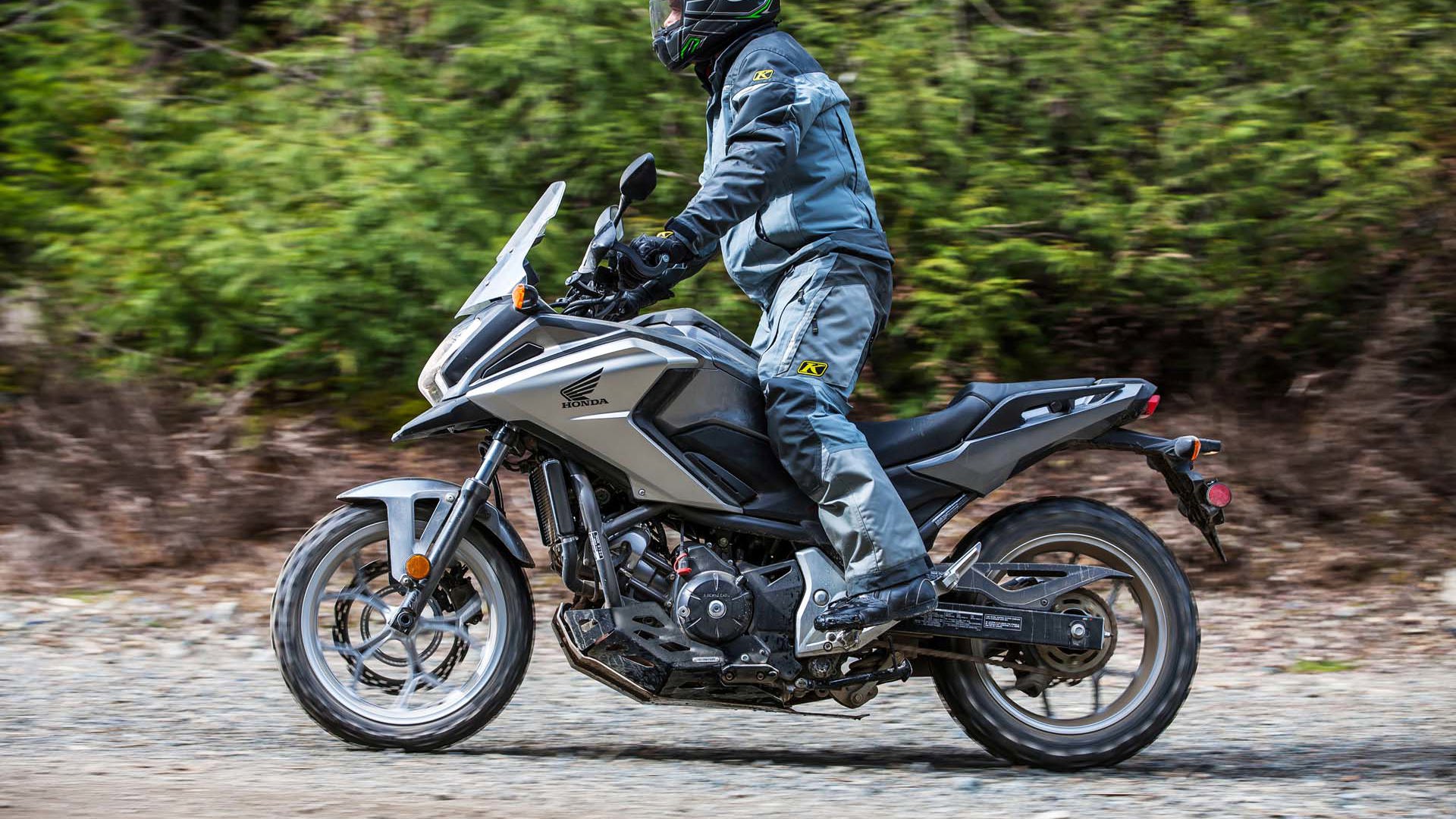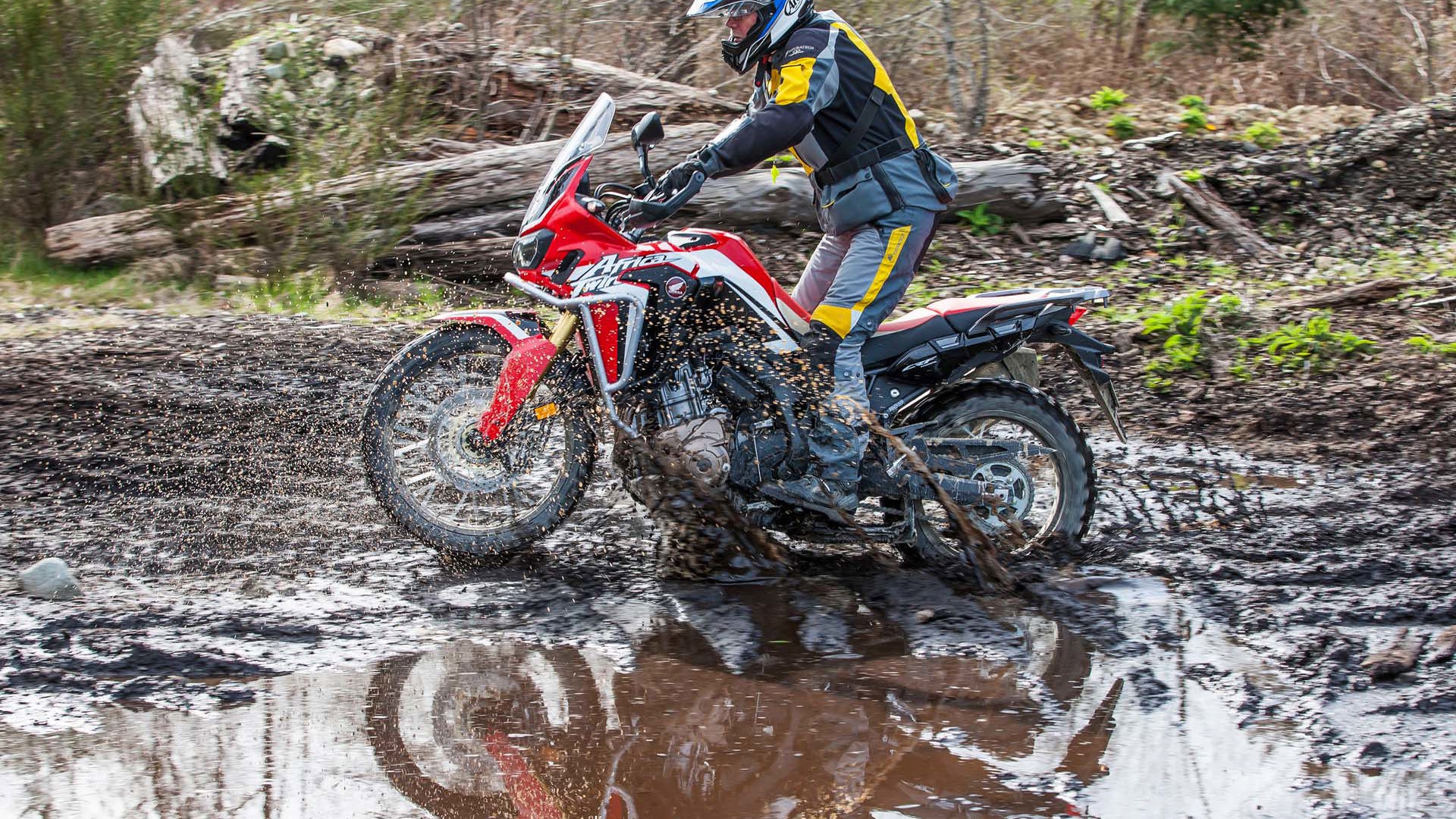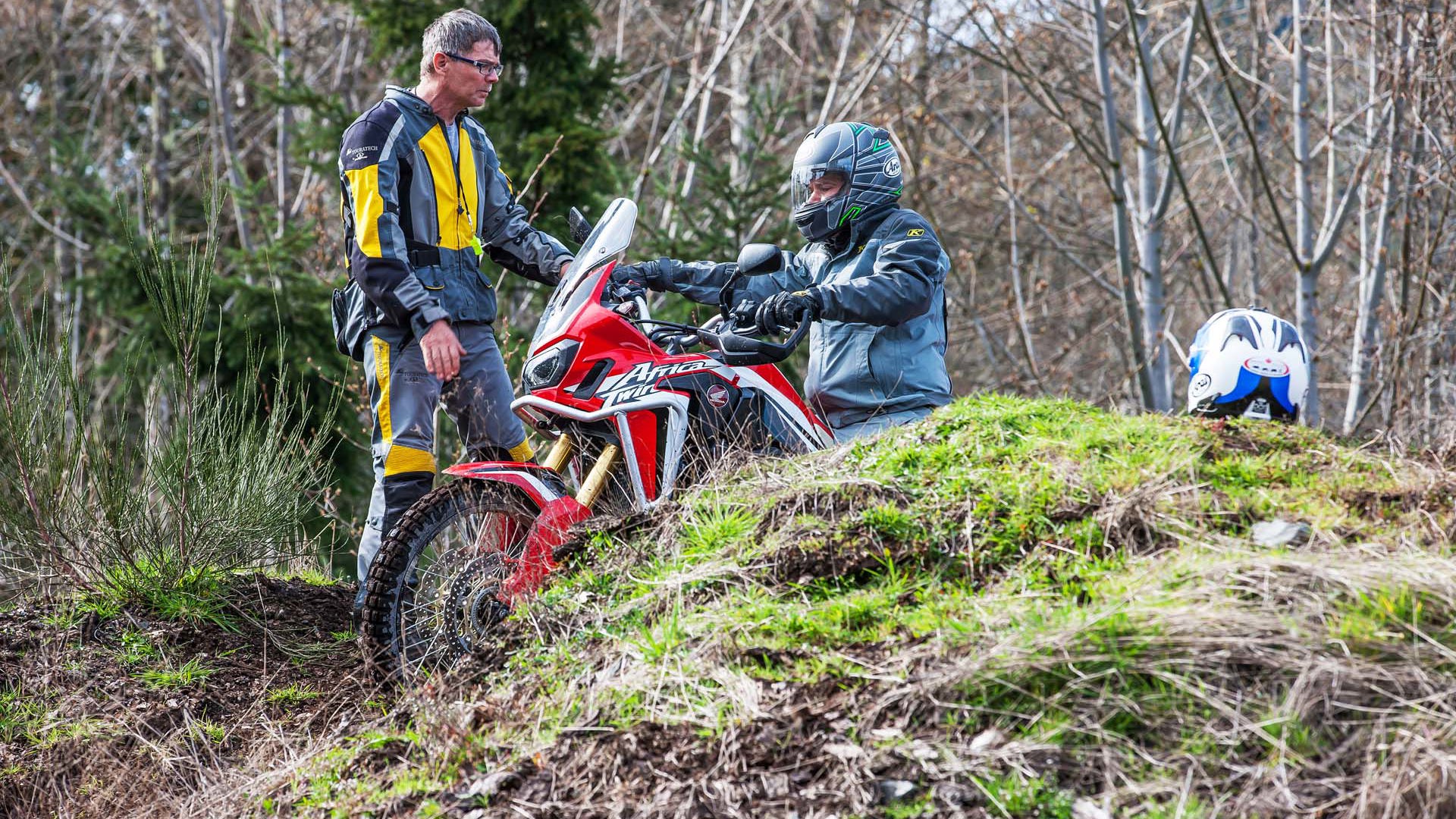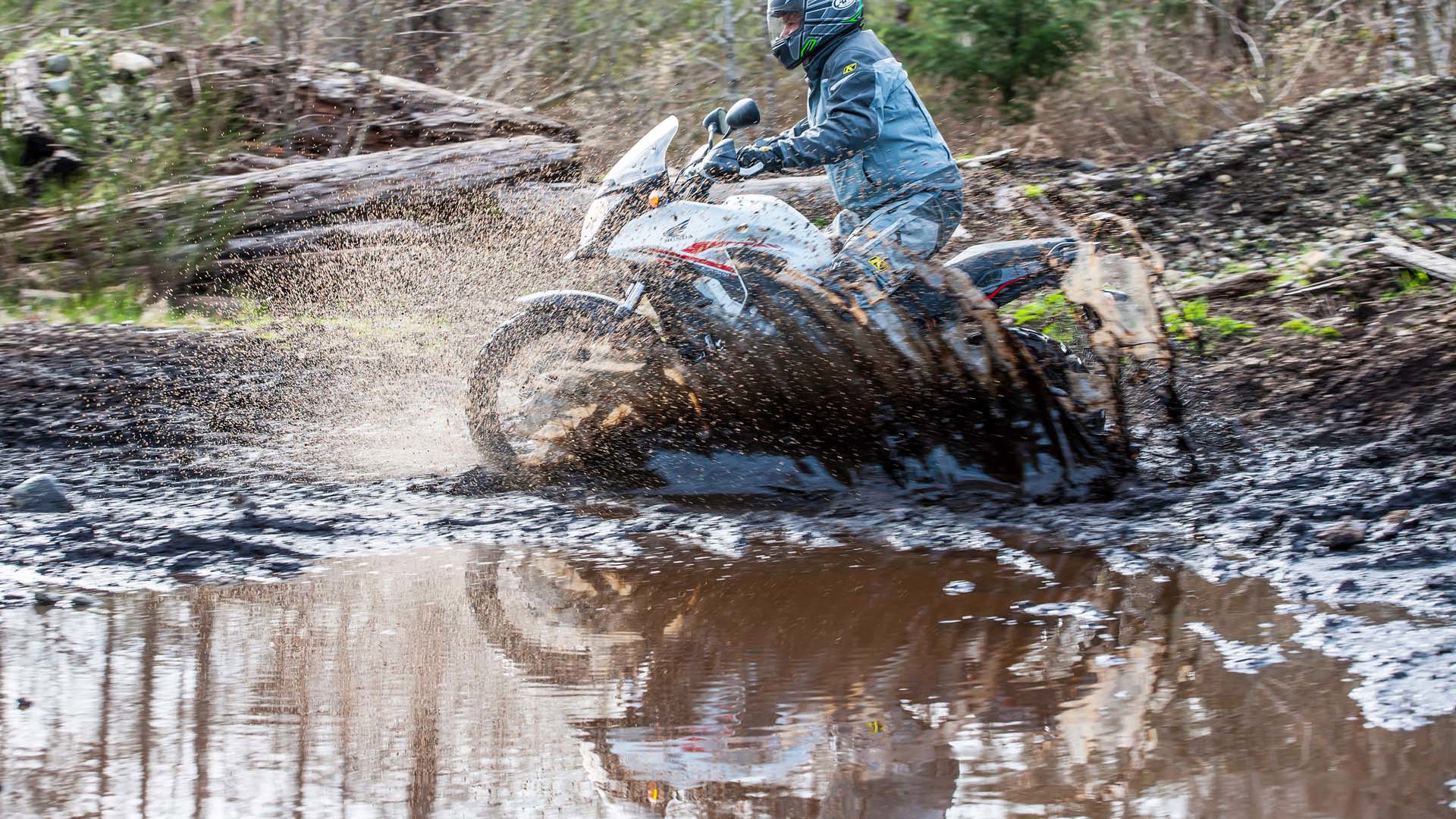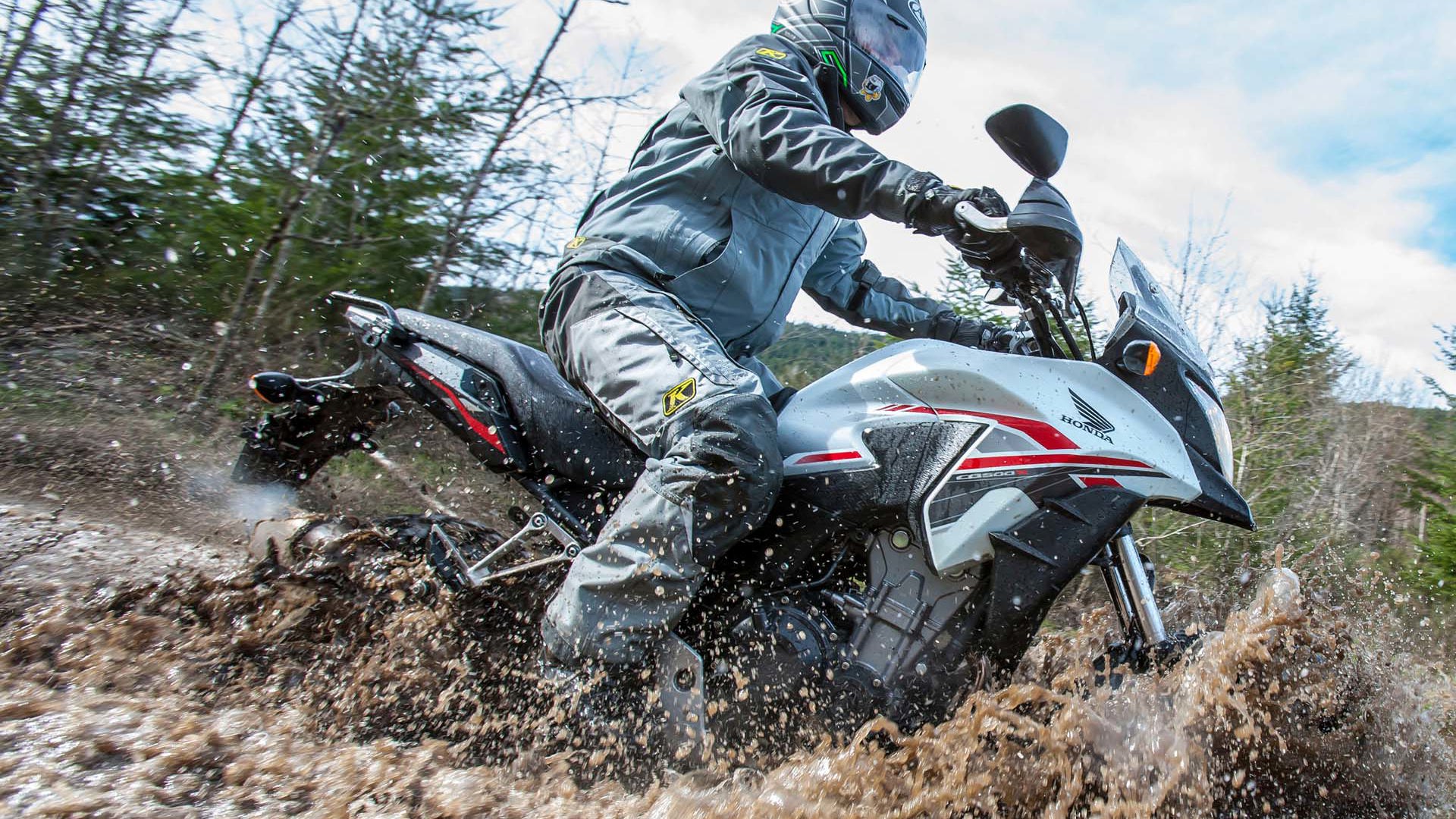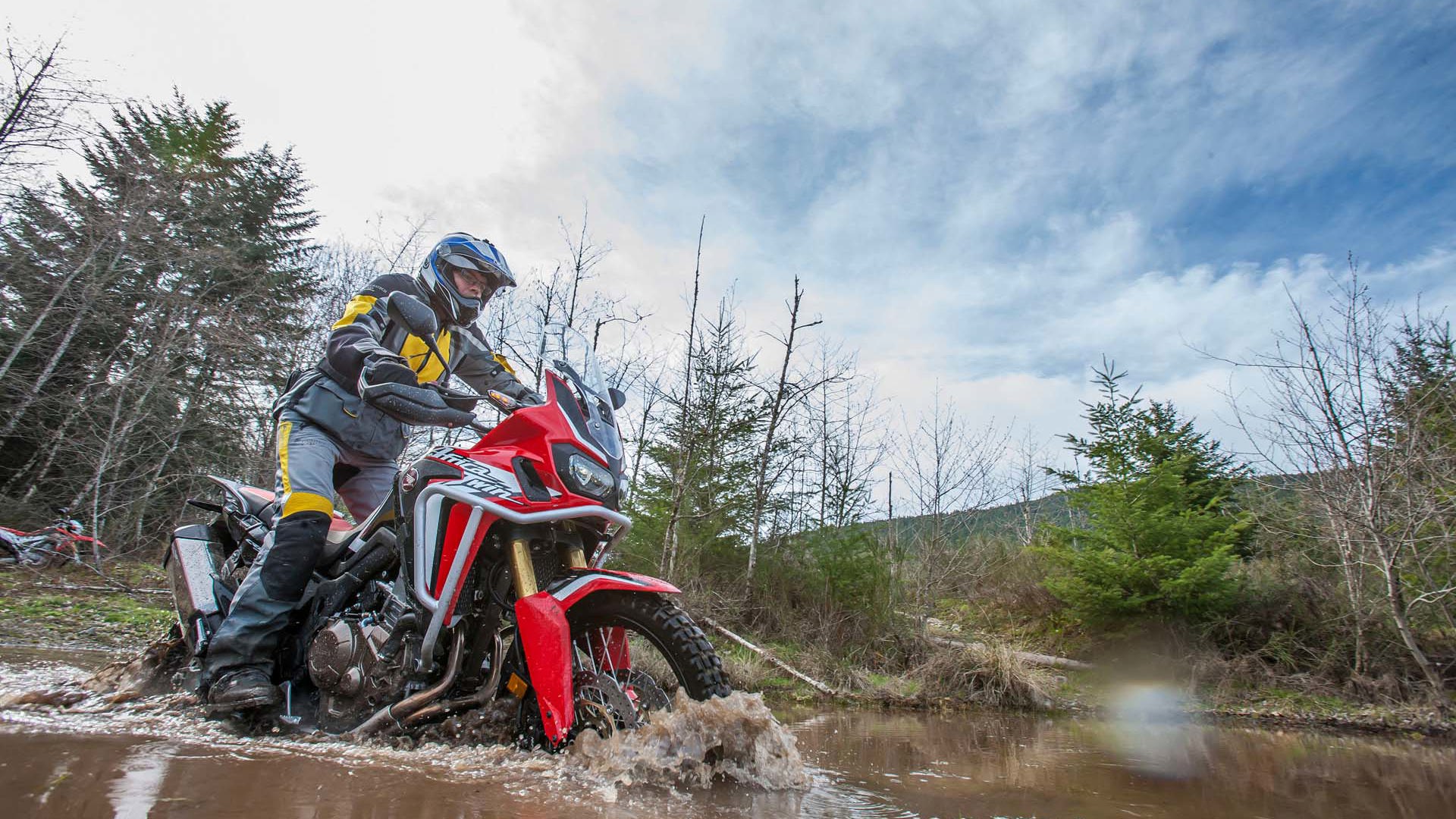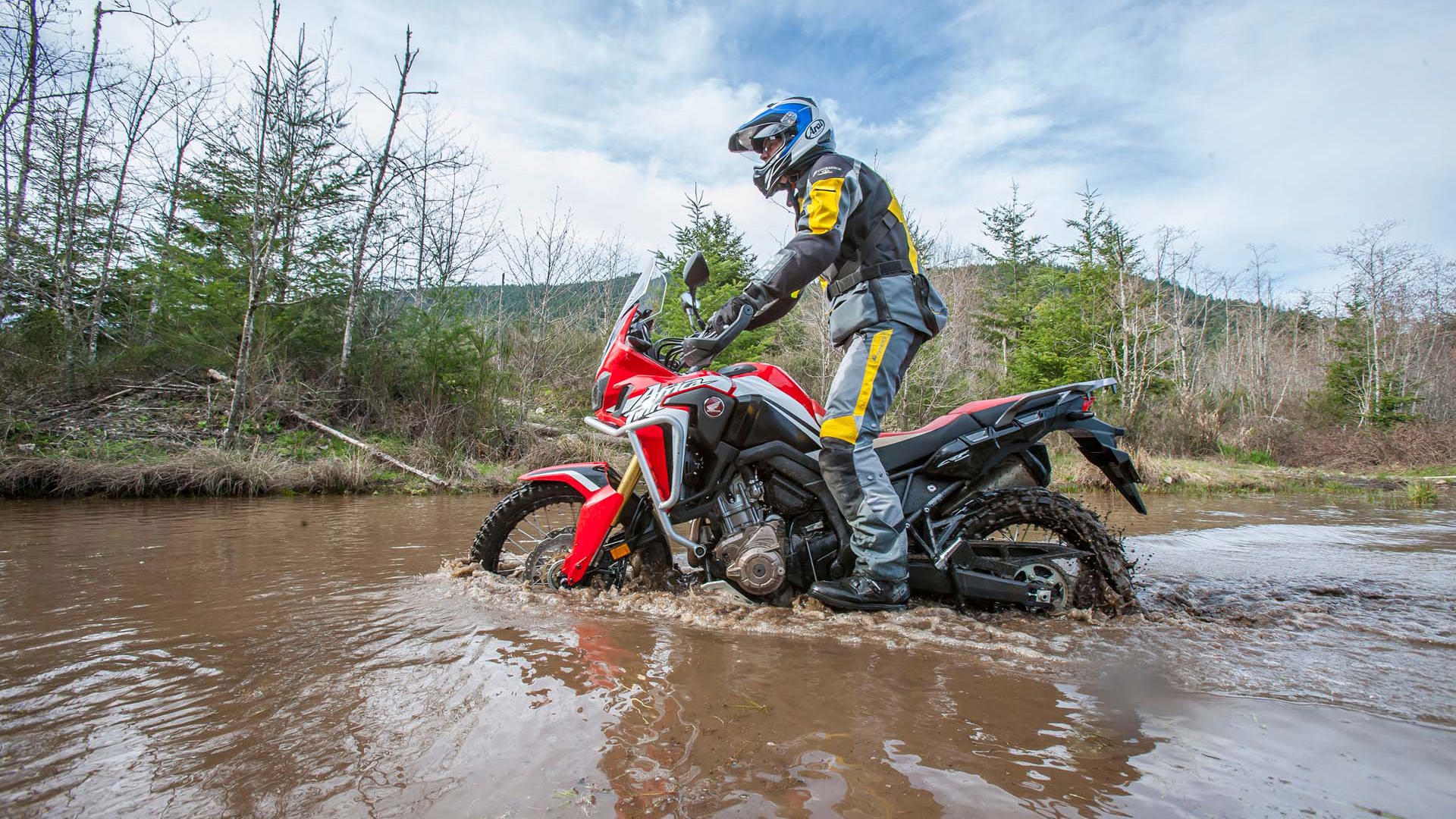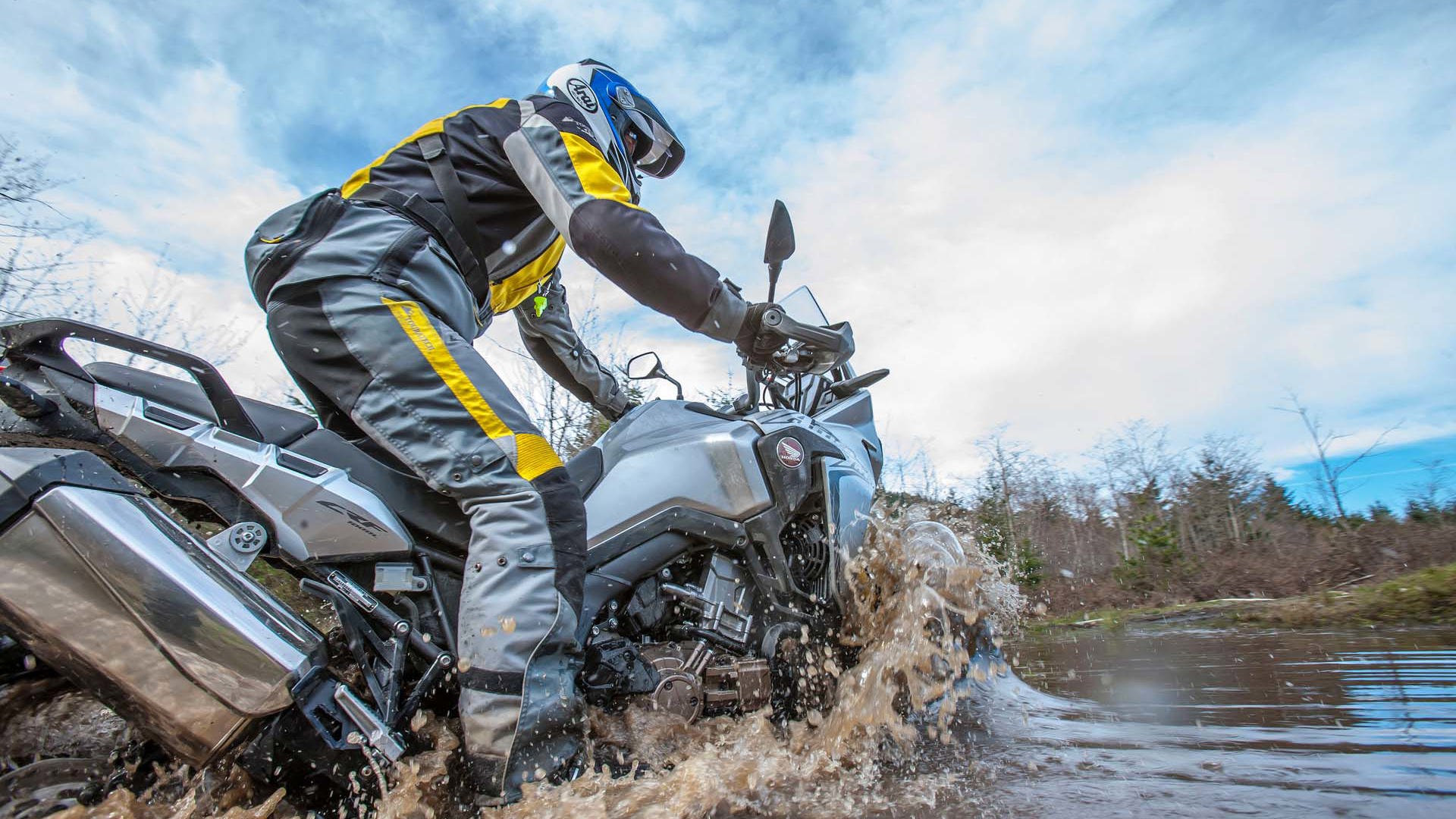Gravel is the bogeyman. In the eyes of the vast majority of riders – especially those who are new to riding or who take it up only in adulthood – any sort of dirt, loose asphalt or gravel is basically the devil. We are indoctrinated from day one. “Look out for gravel.” “Make sure you leave margin of error in case there’s dirt in the corner.” And so on and so forth.
For many of us, looking out for the evil, dreaded, non-asphalt stuff is ingrained deep in our psyche. That’s why after 15 years of motorcycling and several hundred thousand kilometres I’d barely ridden on anything that wasn’t tarmac. And when I did it was at a snail’s pace, my arms locked in fear.
And that’s wrong.
Luckily, for people like me there are people like Clinton Smout of SMART adventure programs. Smout is a seasoned motorcycle educator who runs his own program north of Toronto – he’s also the police motorcycle instructor. And when Honda said, “Hey, come try out the all-new Africa Twin,” they thought it would be prudent to have us educated in the proper techniques for riding off road.
For some of us, it was a valued refresher. For others, including yours truly, it was a baptism – literally. More on that later.
There’s a lot to riding off road and on difficult terrain that’s similar to road riding. Looking up and far ahead is vital, and so is a relaxed and comfortable stance and grip on the bike. Clutch control is important at low speed on the tarmac and even more so on dirt (which is why the Africa Twin’s DCT gearbox is so helpful for newbies).
Lesson One: Crouching Tiger, Painful Back

Riding on the road, one is used to posting in the seat. That is, shifting your body weight from one side to the other with the balls of your feet supporting most of your weight on your pegs. Here too you support most of your wait on the pegs, but now you stand up. You want to be up confidently but not too rigid. Legs slightly bent to absorb impact, knees gripping the tank for stability during acceleration and deceleration. Clinton explains to us the importance of a straight back, and that the bars should be at around your waist height when you stand for maximum comfort.
Standing helps you manage rough roads, and stops the bike seat from centre-punching your coccyx into an uncomfortable position.
Lesson Two: Back to Basics

Lesson two is about going back to slow-speed control. Any muppet can ride a motorbike in a straight line at speed, but it takes clutch control and balance to keep a slow-moving motorcycle upright. So back on the dry pavement we do some typical braking exercises and some slow-speed slalom stuff, including tight figure eights before switching those same exercises over to dirt.
First sitting on pavement, then standing, then sitting on dirt and finally standing on dirt. When taken through the exercises by Clinton the transition to dirt is not intimidating and we soon realize the dirt is not the demon we supposed it was.
Lesson Three: Grasshopper, you have come far
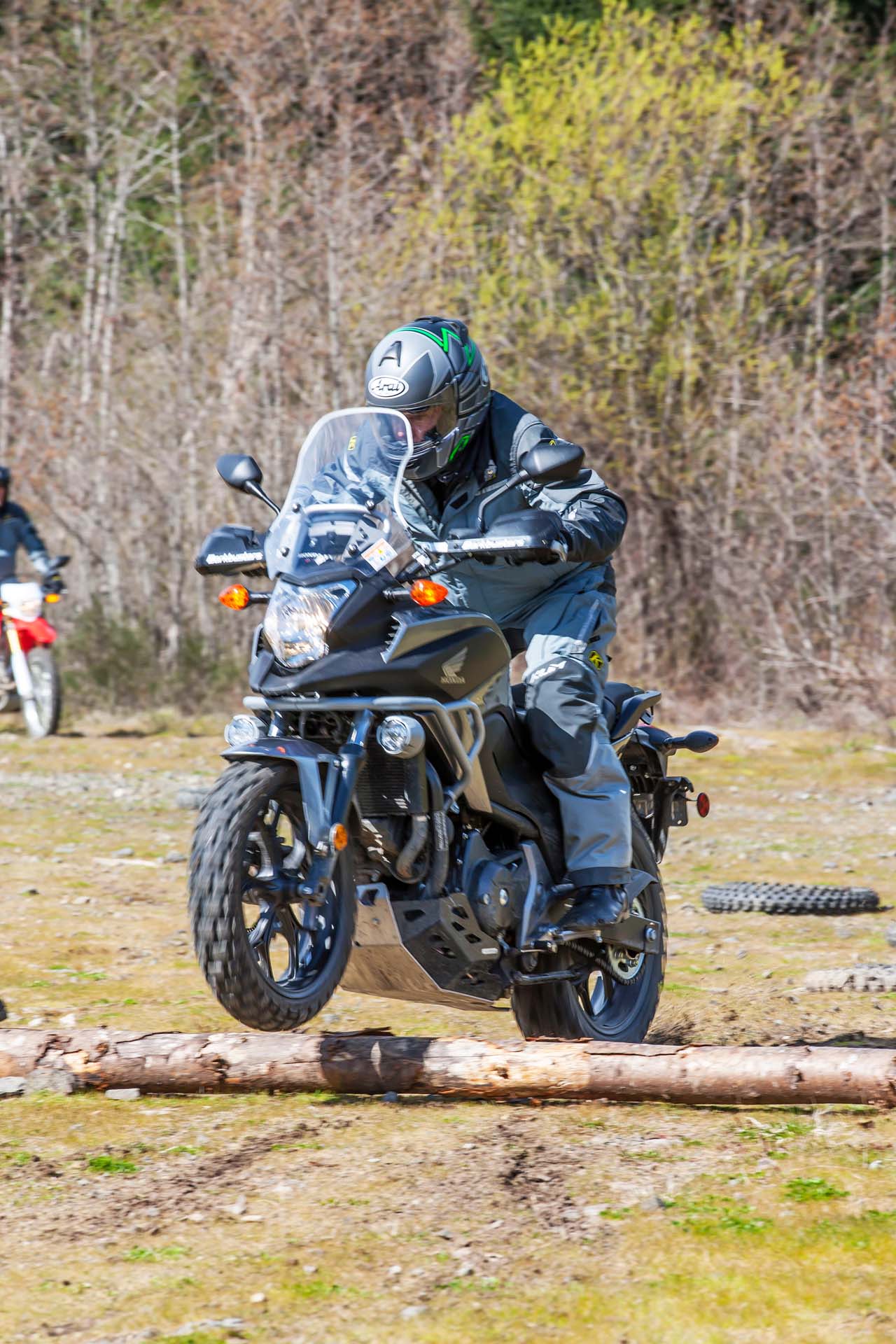
Now the fun begins. First, Smout’s curriculum has us walking the plank. Lining up the fleet of Honda adventure and touring bikes and maintaining our balance over boards of wood. Next, we line up at a row of tires on the ground and ride gently over them, before going back and trying to wheelie over them.
Finally, we’re pointed at two logs. One small, one large. This is the sort of obstacle that could easily skittle a rider on regular ride, let alone a trail. We’re not just learning this because it looks cool, but because it’s a valuable crash-avoidance technique. So, how? Step one, be up on the pegs and approach the log at a slow speed. As you approach, bounce down to compress the suspension, and as the bike gets to the bottom of its travel bounce up, feather the clutch a touch and wind on moderate throttle – BOOM. You just wheelied over a log, son.
During this lesson Clinton gives us another of his mantras – always cover the clutch. Later in the day I see why this is necessary as a bike gets away from a colleague, but it makes sense. By covering the clutch with two fingers you’re able to pull it in if the wheel lifts too high. It’s usually enough to bring the bike back down to the ground and get you out of trouble quickly. Always cover the clutch – especially when wheeling over logs.
Lesson Four: I’m the King of the Castle
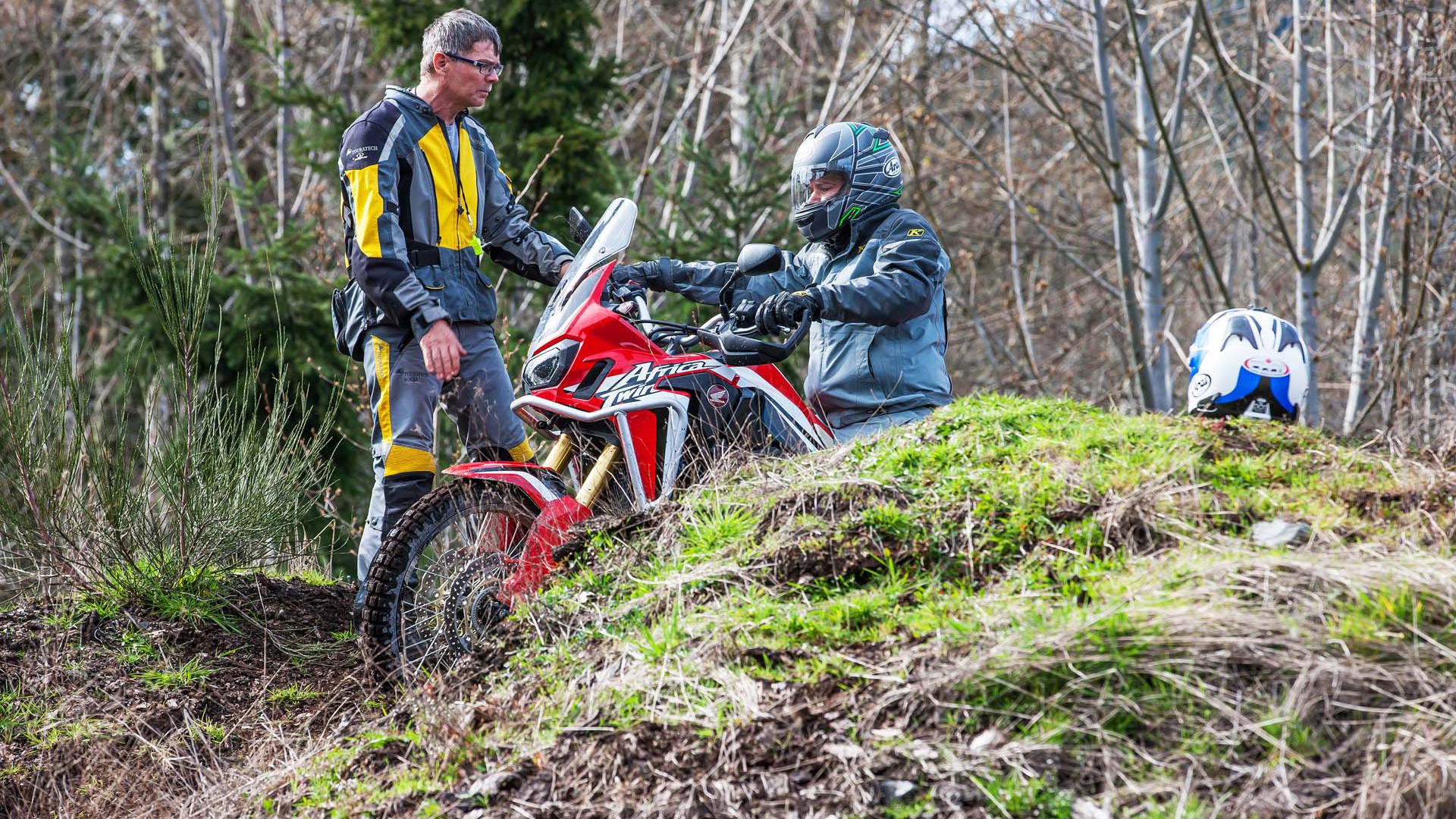
A large hill with a mud pit at the bottom and a rutted, soggy track up the side represents a few challenges. First, getting through the mud at the bottom, second, getting up the slippery slope and third, stopping at the top. Unsurprisingly, all the lessons from earlier combine here. You need vision to pick your line and focus your attention, you need balance to weight the bike properly and you need clutch control.
Through the mud pit at the bottom of the hill it’s important to hold a steady line, constant throttle and to be smooth on the bike. Up the hill, you need your body weight forward over the front wheel, almost pulling the bike up the hill with your body. As you approach the top, the clutch allows you to slow down and moderate speed while still metering out the appropriate amount of power to get you up the grade.
Going down, it’s more of the same but Clinton doles out bonus points for those who get back through the mud pit smoothly at the bottom. The secret is to have your body weight back over the rear on the way down, letting the engine brake the bike as much as possible. Here, you want ABS turned off if you have it, and if it can be. On the Africa Twin, ABS is only turned off on the rear tire, which is perfect. Why would you lock up the rear? Doing so on a dirt hill builds a little mound in front of the tire which can help ease your momentum. Never lock the front though. That’s bad.
At the bottom of the hill a little clutch feather and a squirt of throttle stops the front digging in and squirts you out the other side of the pit in style.
Lesson Five: Gurgle

“Awesome! Well done!” – the good-natured sarcasm from Clinton is not really what I had hoped to hear. The frogs who now reside in my boot and the startled fish diving back out of my helmet into the swamp puddle I’d just crashed in seemed as confused as I was.
Smout was showing us how easy it is to ford up to a couple of feet of water with balance, clutch control and vision. He did it several times before letting us try. My second attempt went badly. The reason? I hadn’t relaxed, my arms were gripping too tight so my inputs weren’t smooth or measured and splash… I was in the water.
The funny thing about waterproof boots is that they don’t let water out, either. So if lots of water happens to get in – say through the top when you go for an unexpected swim – they stay wet.
The next five attempts went more or less well. In a car in such a situation I’d gun the throttle on one side and stay in it until I got out – but that’s not always the right plan on a bike. Trying it that way on one run saw me exit the practice pond via the quite-steep bank on the side perpendicular to our exit ramp – but at least Clinton’s lessons had allowed me to ride out that mistake with no more serious consequences. By being relaxed on the bike and adopting smooth inputs, and shifting my vision to my new exit strategy when the back kicked around, I was able to ride out safely without a repeat of my earlier fail.
It also meant that when we went out on a longer trail later in the week, this time up some mixed-terrain logging roads I was more confident and capable and wasn’t as risky to myself or others. I thought about all the times I’ve avoided a road because I knew there was a gravel or dirt section on it somewhere… now I don’t have to.












